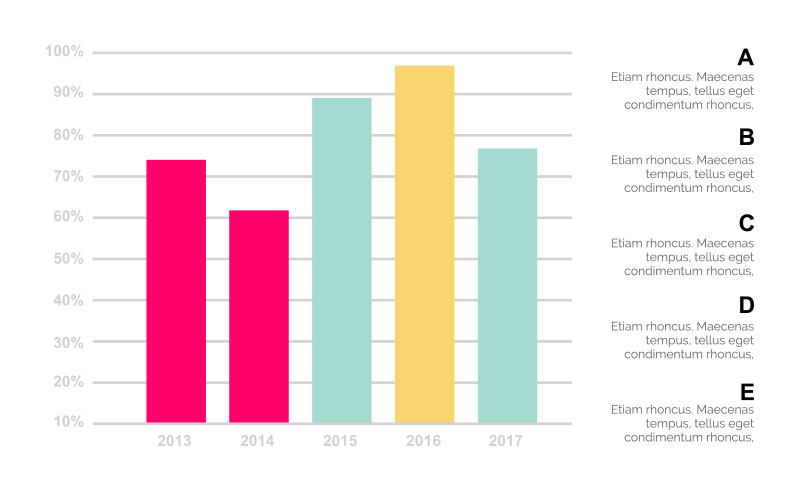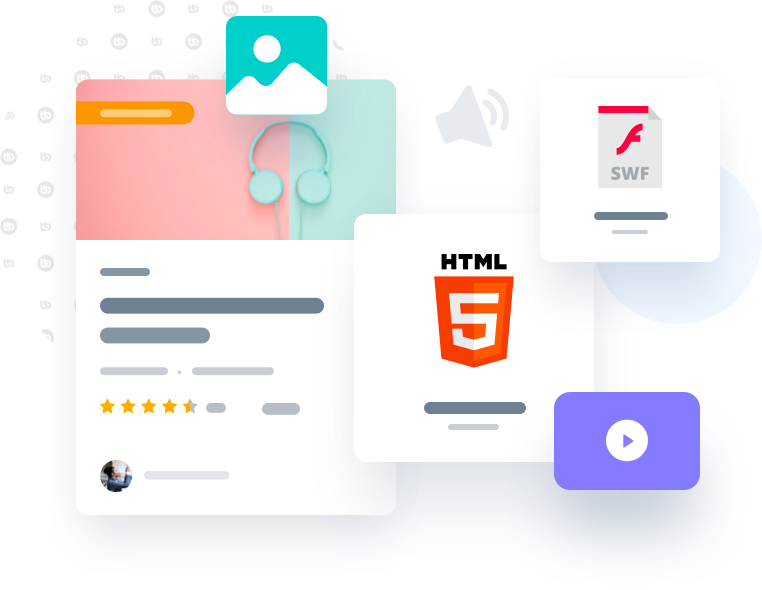B y now, it’s no secret: great employee training yields great results. Employees who are adequately prepared for their jobs are less likely to run the risk of burnout, feel more confident when completing complex deliverables, and demonstrate a heightened sense of loyalty to their employers.
As a result, U.S. organizations collectively spend billions of dollars annually to deliver impactful, top-tier training programs. The most successful corporate training programs include compelling design and content tailored to employees’ specific roles. They’re also available to employees on demand and are updated frequently.
But these components on their own aren’t enough. If your training material doesn’t cater to your employees’ learning preferences, it could fall flat.
What Are Learning Preferences, And Why Do They Matter?
Learning preferences, also referred to as learning styles, describe how people gather, interpret, organize, and store information for further use. In simpler terms, a person’s learning preference is how they best like to receive information. Matching your training content to your employees’ learning preferences can help ensure that they understand, retain, and apply that information successfully. Even more importantly, it can entice them to take the training in the first place.
What Are The Different Learning Preferences?
There are several learning preferences (or styles), but the four core preferences — visual, auditory, reading and writing, and kinesthetic — are the most common among learners in both academic and work environments.

- Visual learners better retain information when it’s presented to them in a graphic depiction, such as charts, infographics, images, and videos.

- Auditory learners prefer listening to information that is presented to them vocally, either in-person or through a recording.

- Reading and writing learners succeed with written information on worksheets, presentations, blogs, and articles. These learners are generally note-takers.

- Kinesthetic learners are hands-on and thrive when engaging all of their senses during training. These kinds of learners tend to be successful in more scientific environments, such as in lab or fieldwork.
How Can I Tailor My Training Content To These Different Preferences?
Your employees will be better poised to absorb training content that best fits their learning preferences. That means the medium you present the content in matters!
Some of your employees may favor a mix of two or more learning preferences, while others might succeed with just one. That’s why creating flexible, adaptable material that employs a blend of one or more learning styles (more on that later) will ultimately lead to greater employee success.
Here are some specific strategies for tailoring your training content to certain learners:

Visual Learners
Visual learners will retain information best when they see eye-capturing graphics, movement, and color. You’re not going to want to bombard visual learners with walls of text or long podcasts with no visual components. Instead, provide visual learners tailored training content by:
- Creating informational videos. A good way to lose a visual learner’s focus is by giving them only verbal or written information. Videos are a fantastic training resource for people with various learning styles because they combine verbal, written, and visual elements in one medium. Visual learners will primarily engage with what they can see, not what they’ll hear, so be sure to create the video with on-screen animations, images, and text.
- Creating infographics that compellingly portray statistics and information. Use eye-catching visual elements, such as complementing color schemes, charts, highlighted bullet points, and arrows to your advantage — just be sure not to overwhelm. Good, compelling design is usually simple and straightforward.
- Making e-books or slideshows with lots of visuals. Visual learners won’t necessarily tune out when presented with blocks of text, but they’re more likely to engage if the text is accompanied by visuals. If your training material is text-heavy, be sure to include pictures, charts, and other visual elements.
Auditory Learners
Auditory learners will fare best with content that is spoken aloud to them. Organizations can tailor their training content to auditory learners by creating audio transcripts of videos and written content.
You can also ask your auditory learning employees for oral summaries of the training material during assessments. Discussing the material every week can help them refresh what they learned in previous weeks and retain new information learned subsequently.
Keep in mind that some auditory learners are also verbal learners, which means they best retain the words they hear and not just any information. Using a rhyming structure or creating acronyms for certain information can help verbal learners better retain the training material.
Reading and Writing Learners
Set your reading and writing learners up for success by giving them plenty of material to read and take notes on. Employees with this learning preference will thrive on reading articles, e-books, and worksheets.
As a general rule, it’s encouraged to make the text visually appealing, even though reading and writing learners aren’t necessarily visual learners. That means the text should be clear and written in legible fonts. It should also be broken into smaller paragraphs and flow with a logical structure. Don’t forget to add images or other graphics that may ease the text’s readability.
It’s also good practice to provide reading and writing learners with tools to take productive notes. Perhaps they will require a notebook or tablet to handwrite notes. Maybe they’ll need certain software, like Day One or Evernote, to organize their notes in a digital format. Whatever the case, reading and writing learners will be thrilled to get their thoughts down on paper.
Kinesthetic Learners
If possible, engage kinesthetic learners with in-person, hands-on workshops in addition to their online training. Allow them to use their senses when exploring the training material. For example, you might ask them to help demonstrate a procedure or allow them to experience your company’s products with their touch, hearing, and sight.
If you’re unable to perform in-person training, providing kinesthetic learners with interactive games, quizzes, or videos can help activate their senses. You can also encourage your kinesthetic learners to walk or move around while reviewing material, or practice what they’ve learned in training while repeating motions.
Another Tip: Tailor Your Training Content to Context
While matching your training content to your employees’ learning preferences is highly recommended, you can also tailor the content to the context. If you run a design firm, for example, you might lean more heavily towards visual training content, given that designers and artists are usually visual learners. An engineering firm may place more emphasis on kinesthetic training so their employees can be hands-on, whereas customer service professionals in a multilingual call center may fare best with auditory learning.
Blended Learning: Making Your Life (And Your Employees’) A Little Easier
Personalized training, however beneficial, isn’t a one-size-fits-all approach. Matching your training content to your employees’ learning preferences is fantastic, but that doesn’t mean you need to create a bespoke training program for every individual. That’s where blended learning comes in.
Instead of producing unique content for each learning style, try repurposing the content so the pieces overlap with each other. This is what’s known as blended learning; there’s no need to reinvent the wheel every time. Not only does it make your life easier, but it will also be immensely helpful for employees with more than one learning style. For example, consider pairing audio transcriptions and/or a video with every written article, then including an interactive quiz at the end. You’re covering all of your bases by ensuring all employees receive the same information in a way that best helps them retain the material.
Blended learning can also refer to mixing both in-person and online delivery methods. If you’re able to conduct on-the-job training or educational seminars, for example, you may consider following up with a recap video, audio transcription, article, or quiz that helps diverse learners further solidify what they’ve learned.
Personalized Training: The Gateway To Stronger Company Culture
Overall, a training program that’s tailored to the learning preferences of your employees will help them better retain more information. It will empower them to make informed, confident decisions and understand how their specific skills add value to your company. But the benefits of personalized training run deeper than that.
Creating bespoke training programs shows your employees you care about their professional development and success. We call that a culture of compassion: one that helps leaders set realistic goals, be flexible and empathetic, and support employees who are passionate about their work.
Compassionate workplace culture tends to cultivate a greater sense of belonging among employees, sparking a positive feedback loop that contributes to higher retention rates, improved employee engagement, and better performance overall.
As a result, catering your training content to the various learning preferences of your employees doesn’t just impact their growth and development. It impacts the foundation of your company culture and, ultimately, the bottom line.

Cecilia Seiter is a content marketer, copywriter, and author at Alloy. She is passionate about the creation of meaningful, fulfilling, and sustainable work cultures.







